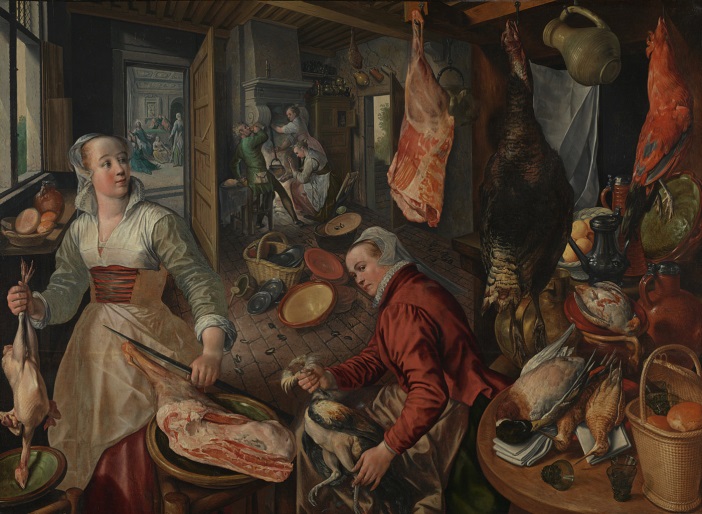
By Lewis Brown
Joachim Beuckelaer, 1569 – 70, four paintings all oil on canvas, NG6585, 6586, 6587 & 6588]
Author/s: Rachel Billinge (The National Gallery, London, Part 2 of 3)
The Portrait of Alexander Mornauer is a relatively small painting (45.2 x 38.7 cm) but other paintings being studied as part of the National Gallery cataloguing programme are significantly larger. In the catalogue of Sixteenth Century Netherlandish Paintings (by Lorne Campbell, published 2014 see: http://www.nationalgallery.org.uk/paintings/research/national-gallery-catalogues/the-sixteenth-century-netherlandish-paintings ) are four canvas paintings, each one about 158 x 215 cm, representing The Four Elements (Earth, Water, Air and Fire) by Joachim Beuckelaer, who worked in Antwerp in the second half of the sixteenth century. He specialized in painting pictures with extensive still-life elements – fruit, vegetables, fish, fowl and game, all beautifully painted; with large scale figures giving context such as a market or kitchen, and often (as in the case of the Four Elements canvases) with smaller scale biblical scenes in the background.

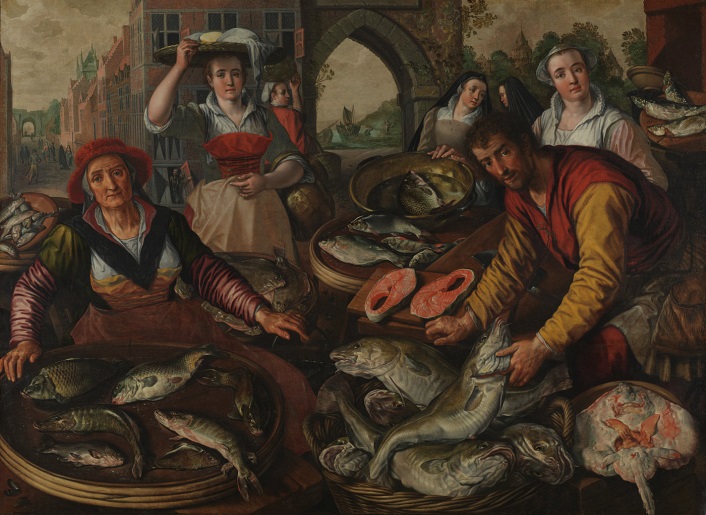
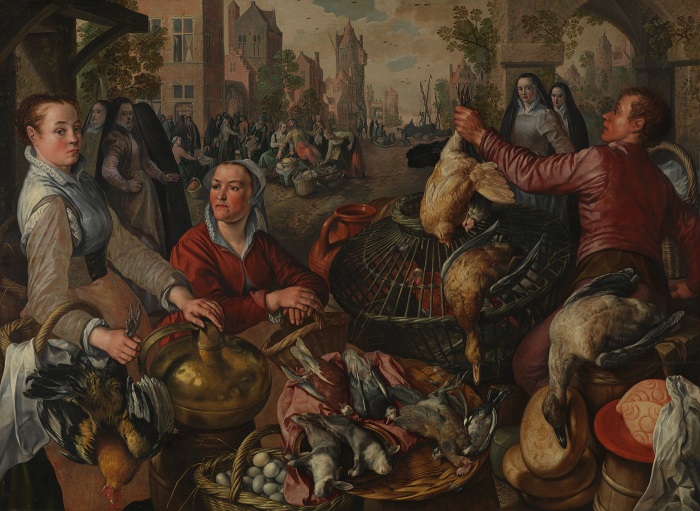
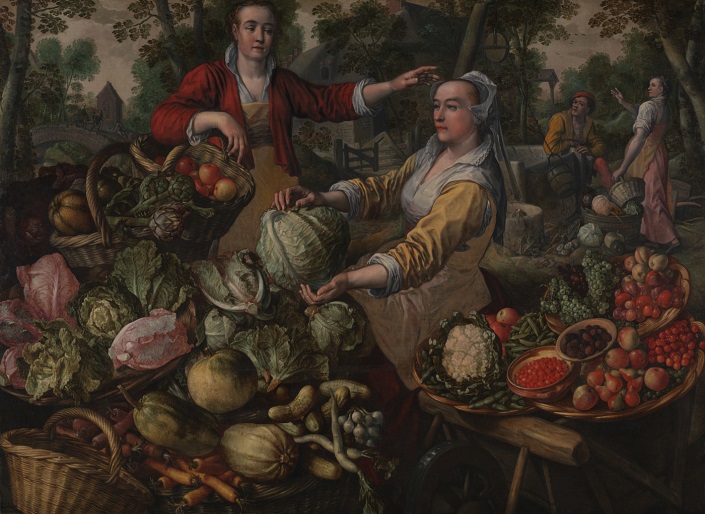
Particular details such as a chicken being held up for sale, a bowl of berries or a bunch of artichokes are repeated in different paintings by Beuckelaer and so it was particularly interesting to try to discover, using IRR, how he went about designing his compositions and copying the various details.
The large size of these paintings would have made such a study a challenge with the old technology but Osiris enabled all four works to be studied in great detail.
A great deal of freely executed underdrawing is present in all four paintings. This was not a surprise since some is visible without technology, in places where the paint has become more transparent with age, but the reflectograms give a more complete picture.
In the background scenes some of the drawing is very free – curls for foliage and the edges of clouds – while the outlines of buildings are roughly indicated.
The still-life elements would have been based on stock drawings in the artist’s studio. There are several techniques for reproducing designs: for example tracing or using a grid to copy square by square, so it was of particular interest to see how Beuckelaer worked. There is a bunch of artichokes in “Earth” that is almost identical, both in size and shape, to one in another of Beuckelaer’s paintings “The Vegetable and Fruit Market” which is owned by Antwerp Museum. The IRR of our painting revealed that Beuckelaer had not used any special method to reproduce his design, he just drew the basic outlines of stalks and circles for heads – just an indication that “artichokes will go here” rather than drawing for the actual detail, which was added as he painted.
IRR also showed that the larger figures were outlined using thicker brushed, black lines and that Beuckelaer was happy to make some quite major revisions to the composition as he worked. Most dramatic were the changes he made to the heads of the two main figures in “Earth”. They now look towards and past each other but the first heads faced in the opposite directions, away from one another.
This is a major change affecting the whole feel of the composition.
The IRR studies of these four paintings have helped to change the appreciation of this artist from one seen as being boringly methodical, churning out repetitive scenes, to one working with skill and freedom.
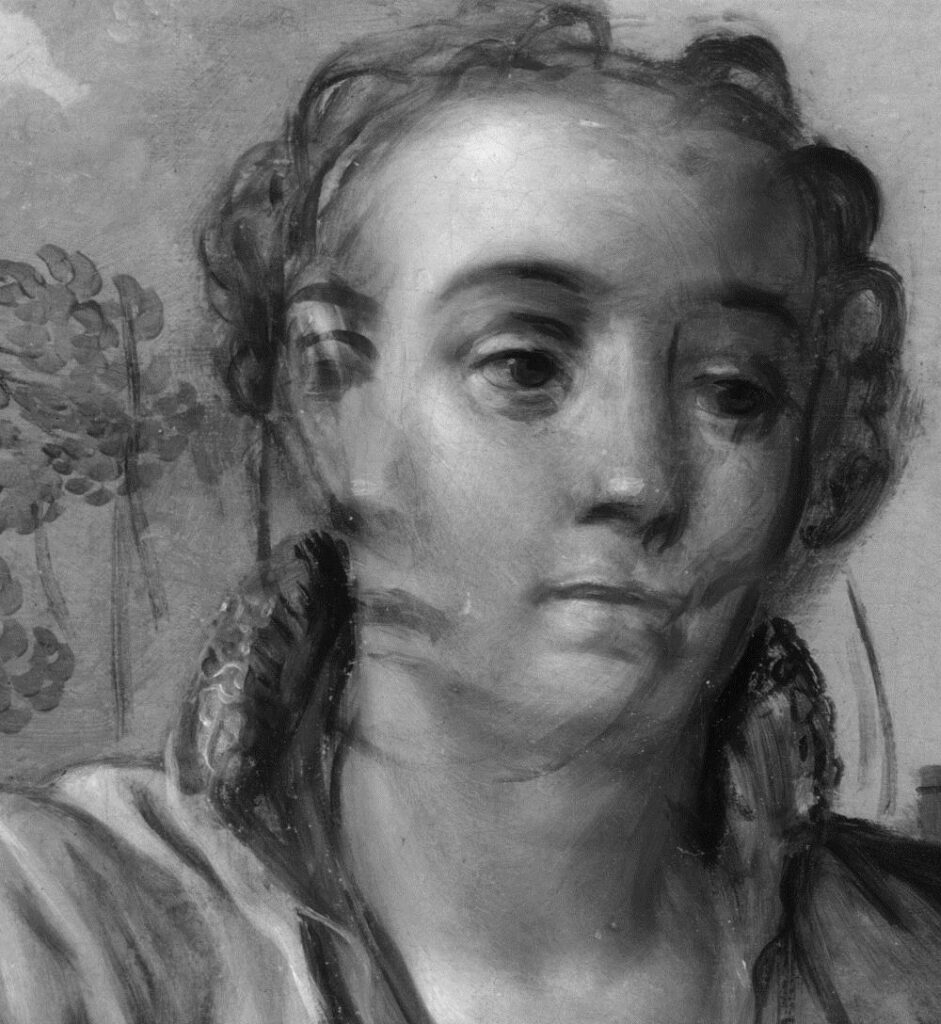
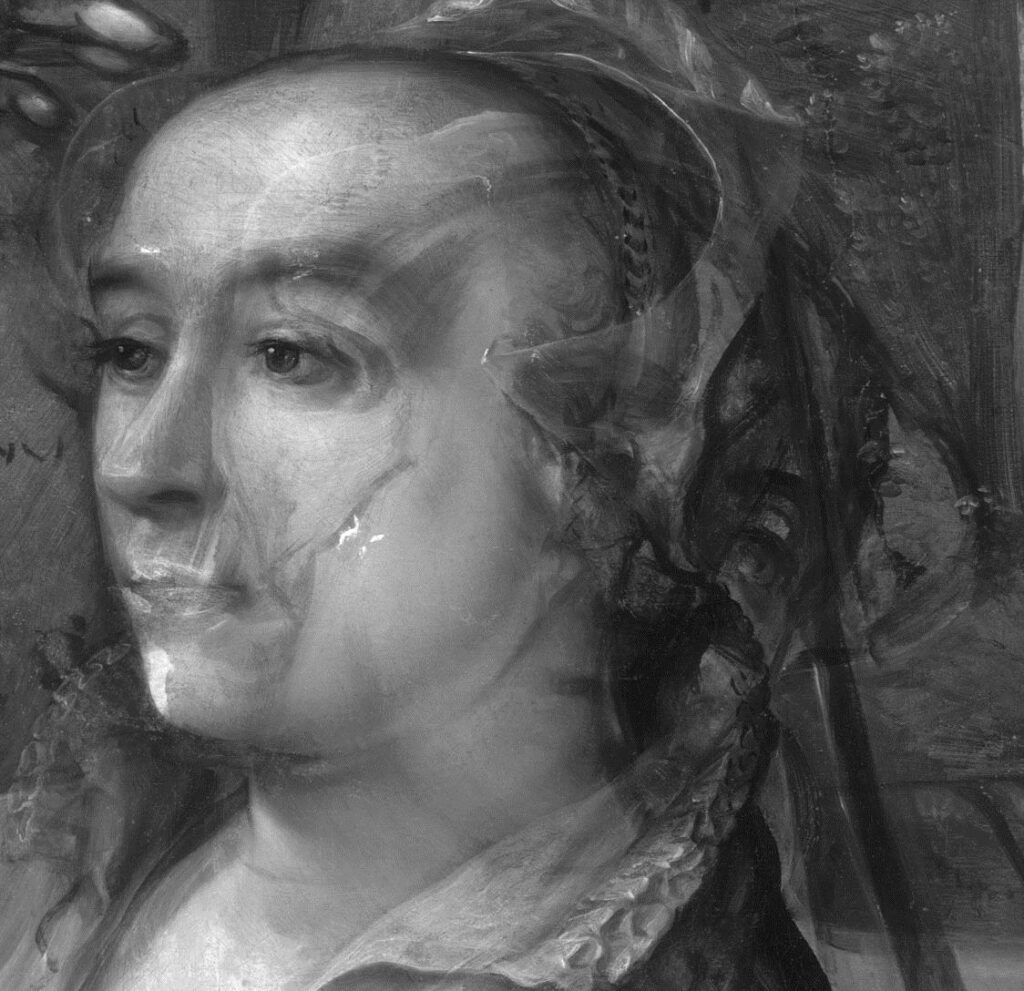
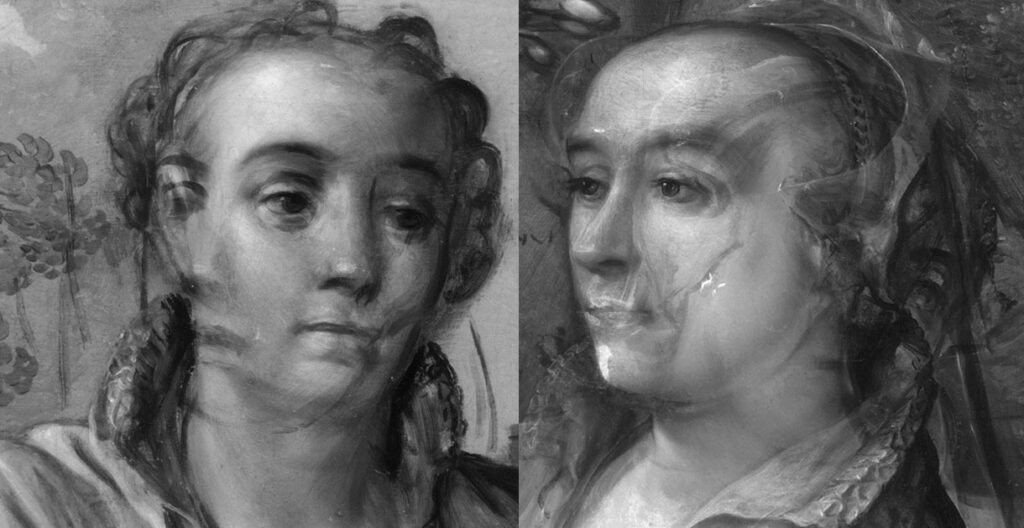
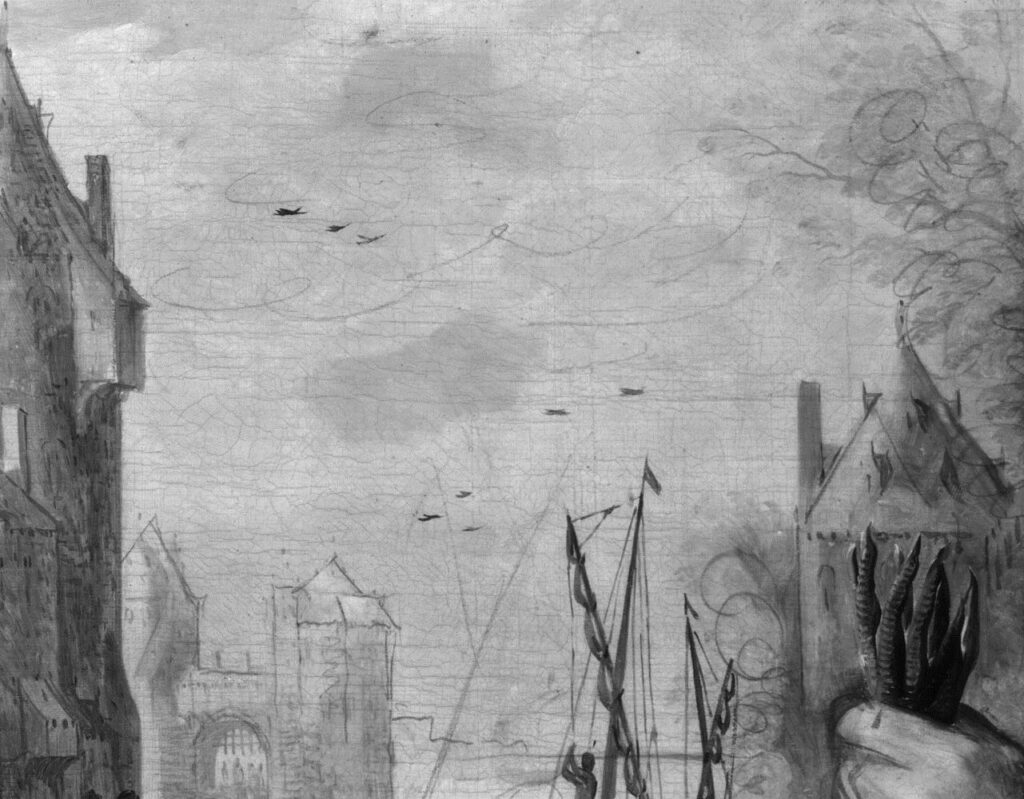
All images © The National Gallery